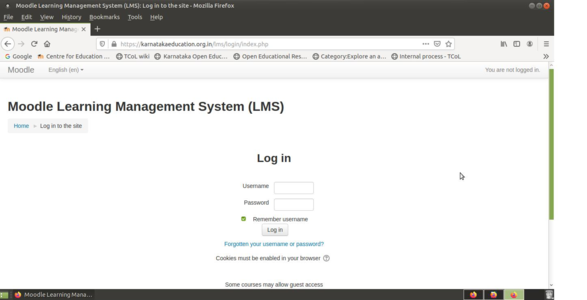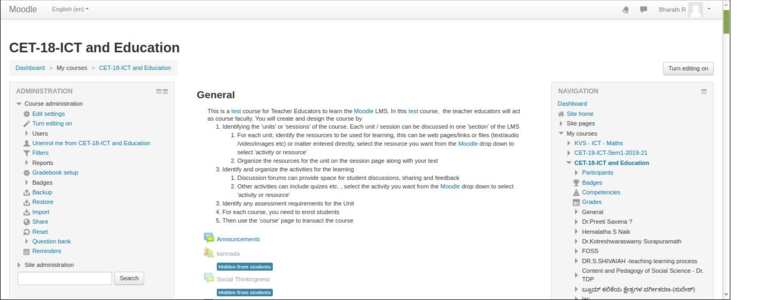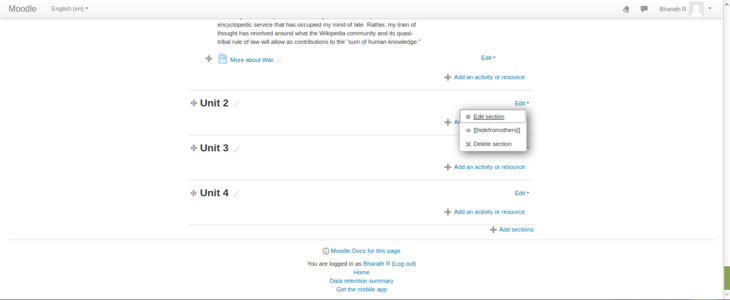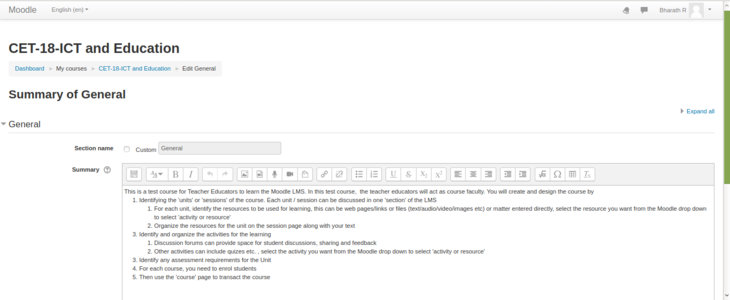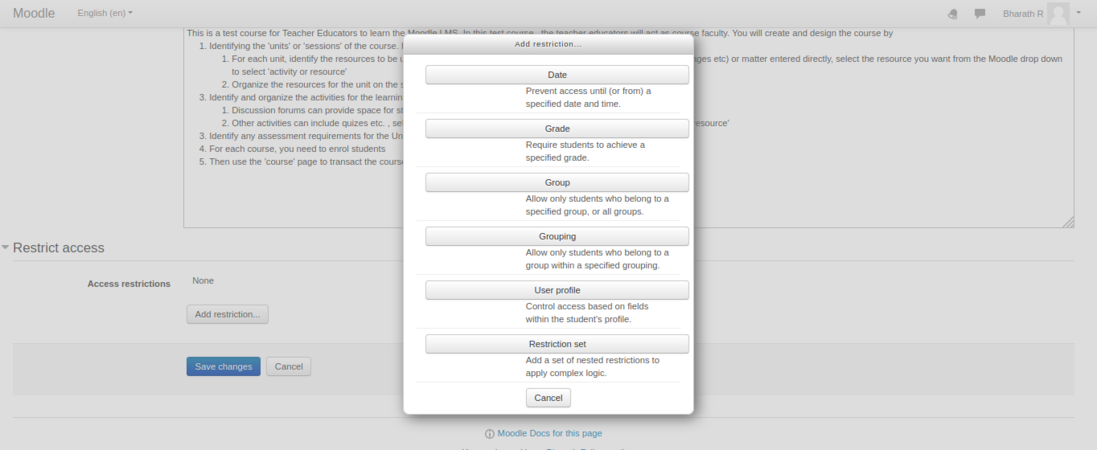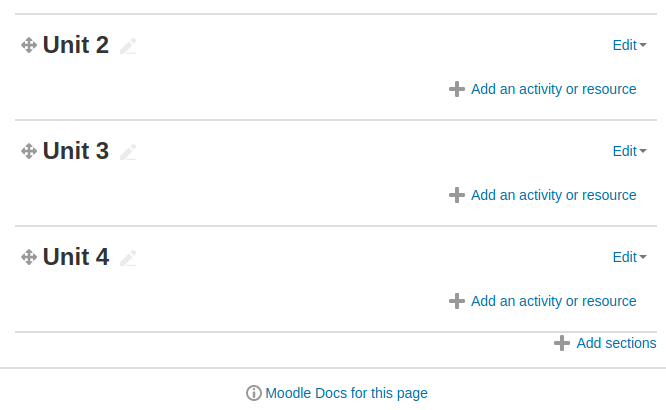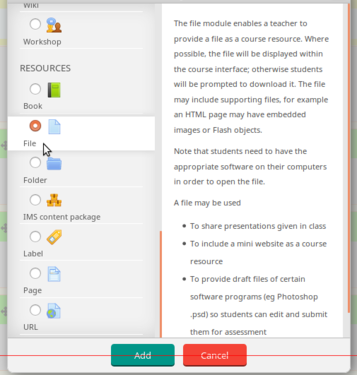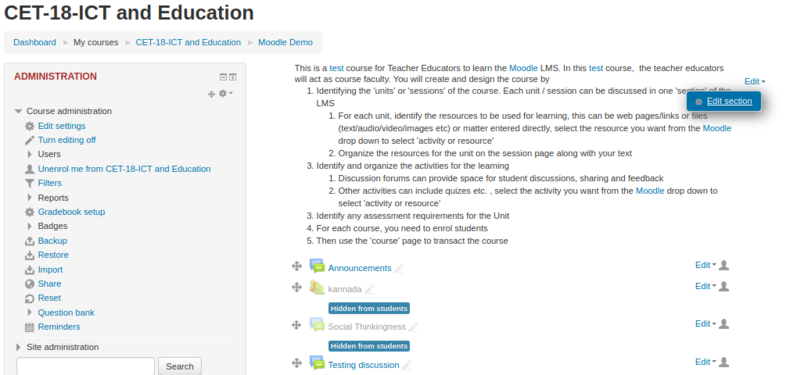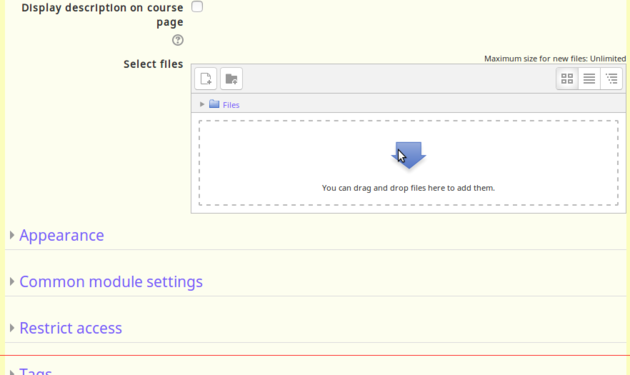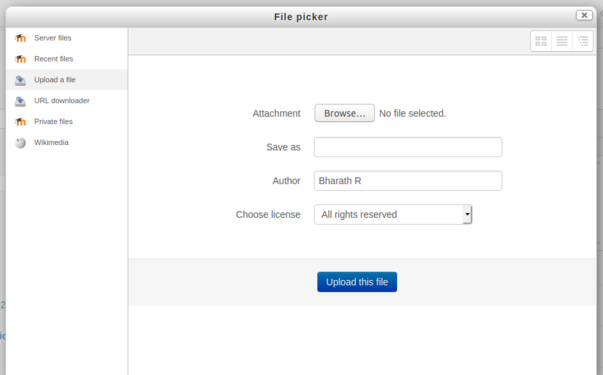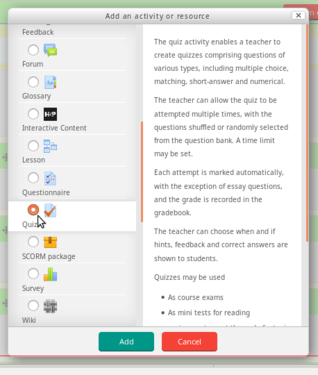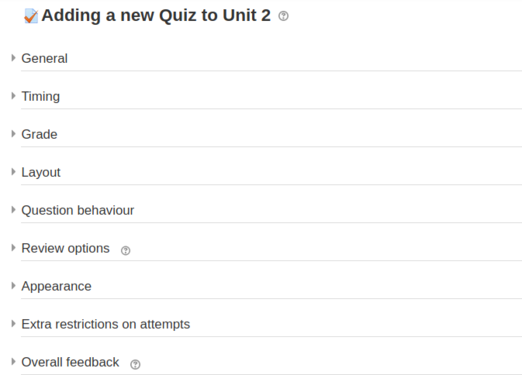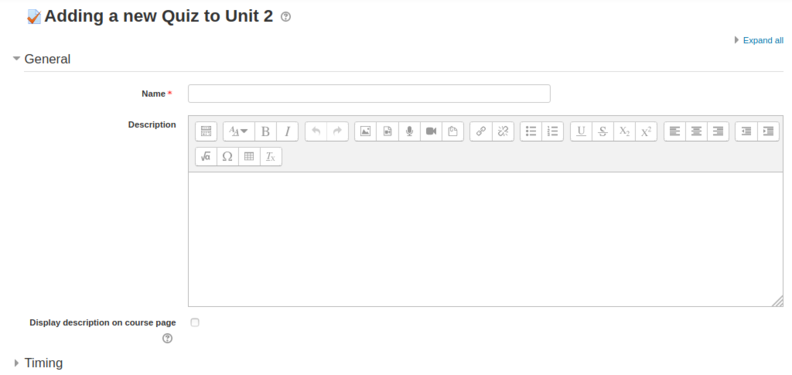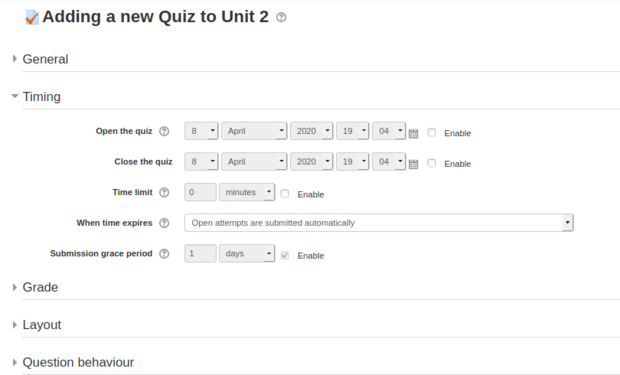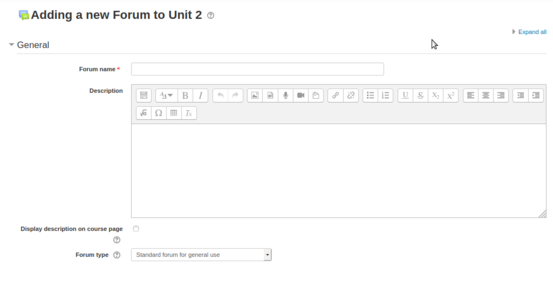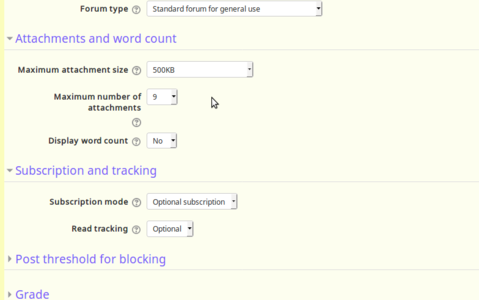Learn Moodle
Introduction
Basic information
| ICT Competency | Moodle is a learning management system (LMS) designed to provide educators, administrators and learners with a robust, secure and integrated system to create personalised learning environments. |
| Educational application and relevance | Moodle provides and on-line platform for collaborative learning. It empower teachers to set-up courses, provide the learning resources and activities for the course and assess learners. |
| Version | Currently using 3.4 |
| Other similar applications | TalentLMS |
| The application on mobiles and tablets | It is a web based application, and can be accessed through a browser on any device supporting browsing. |
| Development and community help | Moodle |
Working with Moodle
A course is a space on a Moodle site where teachers can add learning materials and activities for their students. A teacher may have more than one course and a course may include more than one teacher and more than one group of learners. Both teachers and students have to be 'registered' for a course (as 'teacher' or as 'student'), this role configuration is done by the Moodle administrator.
Logging into Moodle course page
Click on your Moodle course link and click on the login to view or edit the course content. click here to use a Moodle installation managed by Centre for Education and Technology, IT for Change.
- Moodle - Login to the course
Once you login, you can see the course content and you will see your login name on the top right corner of the screen.
Editing sections
Once you have a new blank course, you can start work on it by ''Turning on' the editing, by clicking the Turn editing on' button on the top of the screen. Only faculty will have rights to edit the course contents. This is not available for students.
When the 'editing' option is turned 'on', each item on your course homepage and each section/block will display 'edit' option, which will enable you to perform different functions such as edit/move/copy/delete/hide. Note: In your theme the icons may be different. However the functionality is the same for different themes of Moodle.
Once you click on edit - edit topics, it will take us to edit page (see the below screen shots).
- Moodle - editing course content sections
You can embed your files like images or videos by dragging and dropping the file to the summary section. You can also adjust the size of the file.
Un-check "Use default section name" to give your custom heading for your section.
Start adding section summary under the summary box (you can copy paste from an existing text document also). Use the top 'basic formatting' toolbar to format your text, you can bold or italicise your text and perform basic text editing functions.
Under the restrict section, you can restrict the page to access as in the below screen shot.
- Moodle - editing course content sections
Once you have completed your editing and added the text, images, videos in the section, you should on click on "save changes" button to save your content under that section.
Scroll to the bottom of the course main page and, below the last section, look for the small + and - icons (at right). Click the plus (+)/minus(-) to add and remove sections.
Adding Resources
A resource is an item that a teacher can use to support learning, such as a file or link. To add a resources like files, folder, URLs and to create book turn on your editing by clicking on "turn edit on", choose the section in your course homepage where you'd like it to appear and click on the "Add an activity or resource" then select the type of resources you are going to add into section from the list.
After you select any resource type from the list for example: file type and click on add. In the next dialog box you have enter all the basic information and configure restriction to the students, see the below screenshot for the details.
- Adding resources into the sections
- Name : Type the name for your resources link, it will form the link learners click on to view the file so it is helpful to give it a name that suggests its purpose.
- Description : Add a description of your file here if required.
- Display description on the course page : If this box is ticked, the description will appear on the course page just below the name of the file.
- Select files : click on "Add" and use the File picker to upload your file or drag and drop your file onto the arrow if you are using an appropriate browser. Here you can also create folder and add multiple resource files.
- Adding resources into the sections
Once your browse the file then click on upload this file to upload to the page. Finally click on "save and display" to display your resources under the specified section.
Adding Activities
As well as adding interactive exercises for your students, you can provide them with activities. Moodle supports a range of different activities types that allow you to insert to any section.
To add a activities like quiz, discussion forum, attendances, forms and surveys turn on your editing by clicking on "turn edit on", choose the section in your course homepage where you'd like it to appear and click on the "Add an activity or resource" then select the type of activities you are going to add into section from the list (for example: Quiz).
- Adding activities
After select any activity which you are going to add it to the section (for example: quiz) then click on "add". In the next dialog box will be a settings form for the activity like below.
- General
- Name : Type the name for your resources link, it will form the link learners click on to view the file so it is helpful to give it a name that suggests its purpose.
- Description : Add a description of your file here if required.
- Display description on the course page : If this box is ticked, the description will appear on the course page just below the name of the file.
- Timing
- Open the quiz and Close the quiz : Students can only start their attempt(s) after the open time and they must complete their attempts before the close time.
- Time limit : If enabled, the time limit is stated on the initial quiz page and a countdown timer is displayed in the quiz navigation block.
- Configuring activities
Once the all the settings has been filled out as you needed and saved, the activity will appear at the bottom of the section. You can move any activity around in the course with the move buttons while in course edit mode.
Discussion forum Activity
The forum activity allows students and teachers to exchange ideas by posting comments as part of a 'thread'. The forum activity module enables participants to have discussions on any topics.
There are several forum types to choose from, such as a standard forum where anyone can start a new discussion at any time; a forum where each student can post exactly one discussion; or a question and answer forum where students must first post before being able to view other students' posts. A teacher can allow files to be attached to forum posts. Attached images are displayed in the forum post.
Forums have many uses, such as
- A social space for students to get to know each other
- For course announcements (using a news forum with forced subscription)
- For discussing course content or reading materials
- For continuing online an issue raised previously in a face-to-face session
To add discussion topic click on the add "an activity or resource" option and select forum option from the activities list.
Under the "general" section type your discussion topic and under the "attachments and word count" you can limit the size of the attachment and word counts and number of attachments etc.
After you completes the editing, click on "Save and display" to display third discussion thread under your selected section.
Students by simply clicking on this link, they can start replying it.
